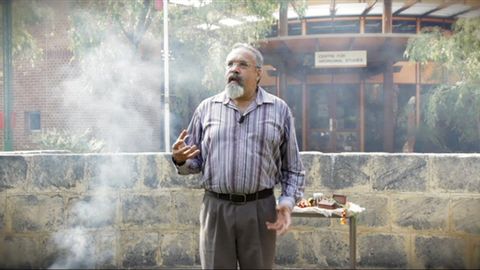
Subtitles & vocabulary
Smoking ceremony at the Centre for Aboriginal Studies
00
阿多賓 posted on 2014/01/16Save
Video vocabulary
country
US /ˈkʌntri/
・
UK /ˈkʌntri/
- Noun (Countable/Uncountable)
- An area of land that is controlled by a government
- Open land that is away from towns and cities
- Adjective
- Relating to or characteristic of the countryside.
- Representing one's nation in sports or other competitions.
A1
More smoke
US /smoʊk/
・
UK /sməʊk/
- Intransitive Verb
- To give off a cloud of grey gas from burning
- Uncountable Noun
- Grey gas from fires and cigarettes
- Fog of air coming from e.g. a cigarette, fire
B1
More present
US /ˈprɛznt/
・
UK /'preznt/
- Adjective
- Being in attendance; being there; having turned up
- Being in a particular place; existing or occurring now.
- Noun
- Gift
- Verb tense indicating an action is happening now
A1TOEIC
More mother
US /ˈmʌðɚ/
・
UK /ˈmʌðə(r)/
- Noun
- Female who has a child or children; female parent
- Transitive Verb
- To take care of someone as if they were your child
A1
More Use Energy
Unlock All Vocabulary
Unlock pronunciation, explanations, and filters
